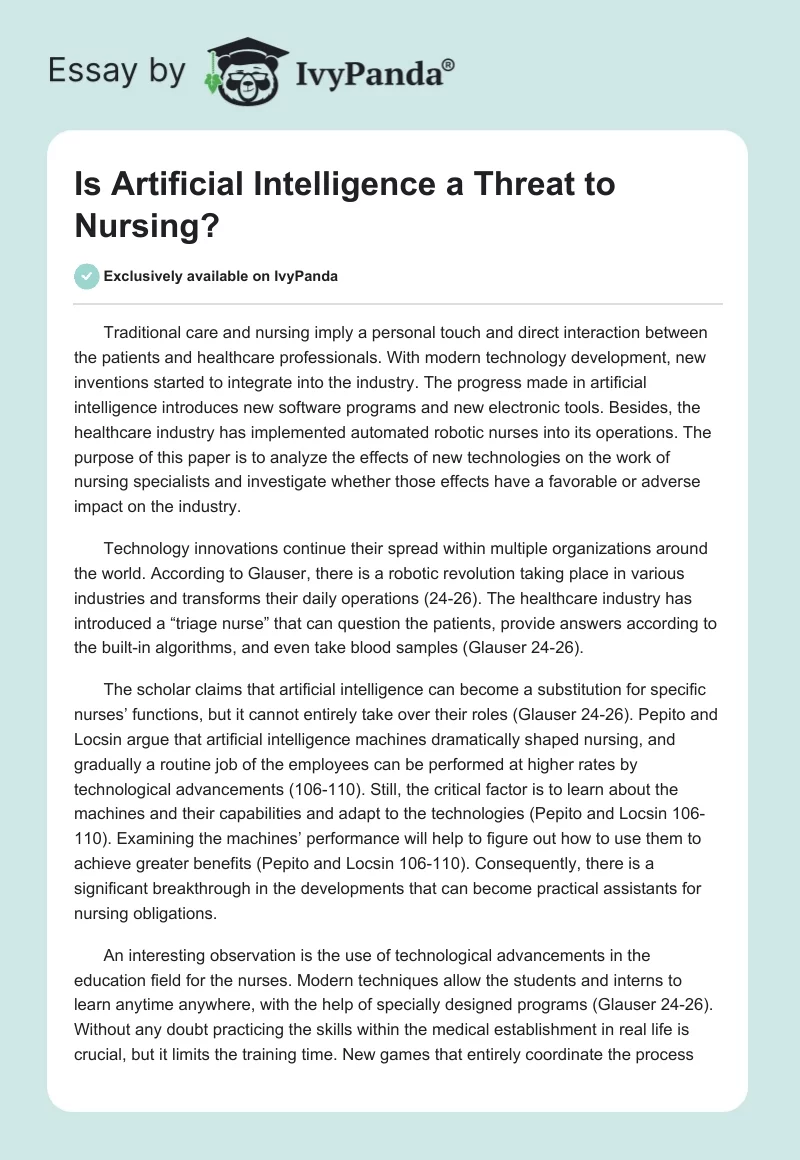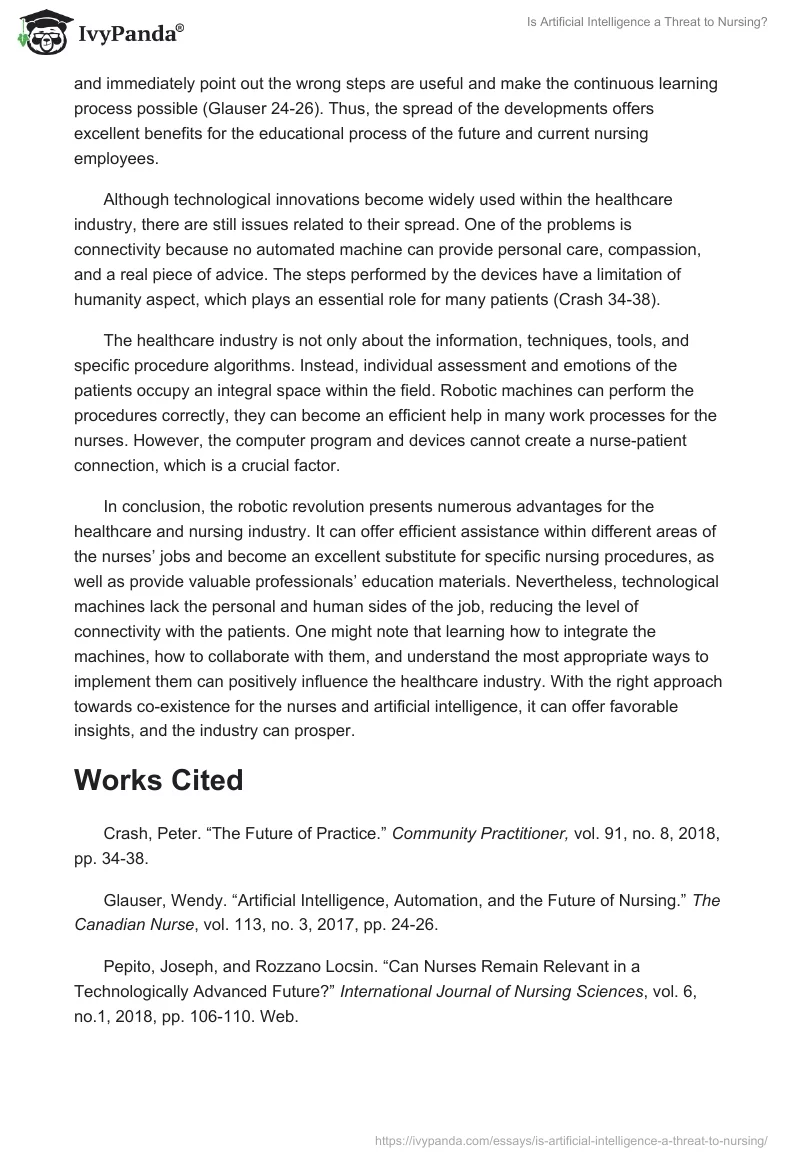Traditional care and nursing imply a personal touch and direct interaction between the patients and healthcare professionals. With modern technology development, new inventions started to integrate into the industry. The progress made in artificial intelligence introduces new software programs and new electronic tools. Besides, the healthcare industry has implemented automated robotic nurses into its operations. The purpose of this paper is to analyze the effects of new technologies on the work of nursing specialists and investigate whether those effects have a favorable or adverse impact on the industry.
Technology innovations continue their spread within multiple organizations around the world. According to Glauser, there is a robotic revolution taking place in various industries and transforms their daily operations (24-26). The healthcare industry has introduced a “triage nurse” that can question the patients, provide answers according to the built-in algorithms, and even take blood samples (Glauser 24-26).
The scholar claims that artificial intelligence can become a substitution for specific nurses’ functions, but it cannot entirely take over their roles (Glauser 24-26). Pepito and Locsin argue that artificial intelligence machines dramatically shaped nursing, and gradually a routine job of the employees can be performed at higher rates by technological advancements (106-110). Still, the critical factor is to learn about the machines and their capabilities and adapt to the technologies (Pepito and Locsin 106-110). Examining the machines’ performance will help to figure out how to use them to achieve greater benefits (Pepito and Locsin 106-110). Consequently, there is a significant breakthrough in the developments that can become practical assistants for nursing obligations.
An interesting observation is the use of technological advancements in the education field for the nurses. Modern techniques allow the students and interns to learn anytime anywhere, with the help of specially designed programs (Glauser 24-26). Without any doubt practicing the skills within the medical establishment in real life is crucial, but it limits the training time. New games that entirely coordinate the process and immediately point out the wrong steps are useful and make the continuous learning process possible (Glauser 24-26). Thus, the spread of the developments offers excellent benefits for the educational process of the future and current nursing employees.
Although technological innovations become widely used within the healthcare industry, there are still issues related to their spread. One of the problems is connectivity because no automated machine can provide personal care, compassion, and a real piece of advice. The steps performed by the devices have a limitation of humanity aspect, which plays an essential role for many patients (Crash 34-38).
The healthcare industry is not only about the information, techniques, tools, and specific procedure algorithms. Instead, individual assessment and emotions of the patients occupy an integral space within the field. Robotic machines can perform the procedures correctly, they can become an efficient help in many work processes for the nurses. However, the computer program and devices cannot create a nurse-patient connection, which is a crucial factor.
In conclusion, the robotic revolution presents numerous advantages for the healthcare and nursing industry. It can offer efficient assistance within different areas of the nurses’ jobs and become an excellent substitute for specific nursing procedures, as well as provide valuable professionals’ education materials. Nevertheless, technological machines lack the personal and human sides of the job, reducing the level of connectivity with the patients. One might note that learning how to integrate the machines, how to collaborate with them, and understand the most appropriate ways to implement them can positively influence the healthcare industry. With the right approach towards co-existence for the nurses and artificial intelligence, it can offer favorable insights, and the industry can prosper.
Works Cited
Crash, Peter. “The Future of Practice.” Community Practitioner, vol. 91, no. 8, 2018, pp. 34-38.
Glauser, Wendy. “Artificial Intelligence, Automation, and the Future of Nursing.” The Canadian Nurse, vol. 113, no. 3, 2017, pp. 24-26.
Pepito, Joseph, and Rozzano Locsin. “Can Nurses Remain Relevant in a Technologically Advanced Future?” International Journal of Nursing Sciences, vol. 6, no.1, 2018, pp. 106-110. Web.


